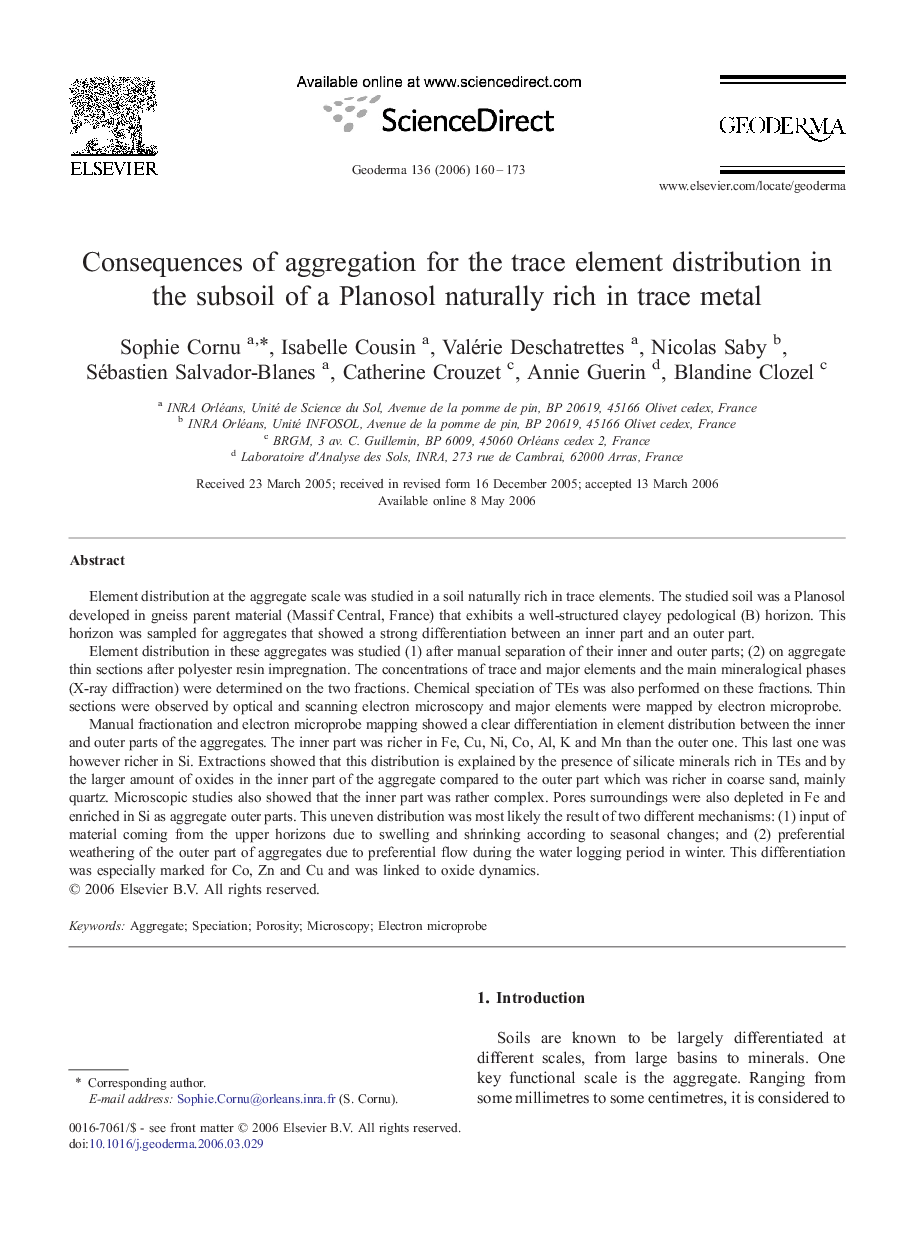| کد مقاله | کد نشریه | سال انتشار | مقاله انگلیسی | نسخه تمام متن |
|---|---|---|---|---|
| 4575589 | 1629561 | 2006 | 14 صفحه PDF | دانلود رایگان |

Element distribution at the aggregate scale was studied in a soil naturally rich in trace elements. The studied soil was a Planosol developed in gneiss parent material (Massif Central, France) that exhibits a well-structured clayey pedological (B) horizon. This horizon was sampled for aggregates that showed a strong differentiation between an inner part and an outer part.Element distribution in these aggregates was studied (1) after manual separation of their inner and outer parts; (2) on aggregate thin sections after polyester resin impregnation. The concentrations of trace and major elements and the main mineralogical phases (X-ray diffraction) were determined on the two fractions. Chemical speciation of TEs was also performed on these fractions. Thin sections were observed by optical and scanning electron microscopy and major elements were mapped by electron microprobe.Manual fractionation and electron microprobe mapping showed a clear differentiation in element distribution between the inner and outer parts of the aggregates. The inner part was richer in Fe, Cu, Ni, Co, Al, K and Mn than the outer one. This last one was however richer in Si. Extractions showed that this distribution is explained by the presence of silicate minerals rich in TEs and by the larger amount of oxides in the inner part of the aggregate compared to the outer part which was richer in coarse sand, mainly quartz. Microscopic studies also showed that the inner part was rather complex. Pores surroundings were also depleted in Fe and enriched in Si as aggregate outer parts. This uneven distribution was most likely the result of two different mechanisms: (1) input of material coming from the upper horizons due to swelling and shrinking according to seasonal changes; and (2) preferential weathering of the outer part of aggregates due to preferential flow during the water logging period in winter. This differentiation was especially marked for Co, Zn and Cu and was linked to oxide dynamics.
Journal: Geoderma - Volume 136, Issues 1–2, 1 December 2006, Pages 160–173